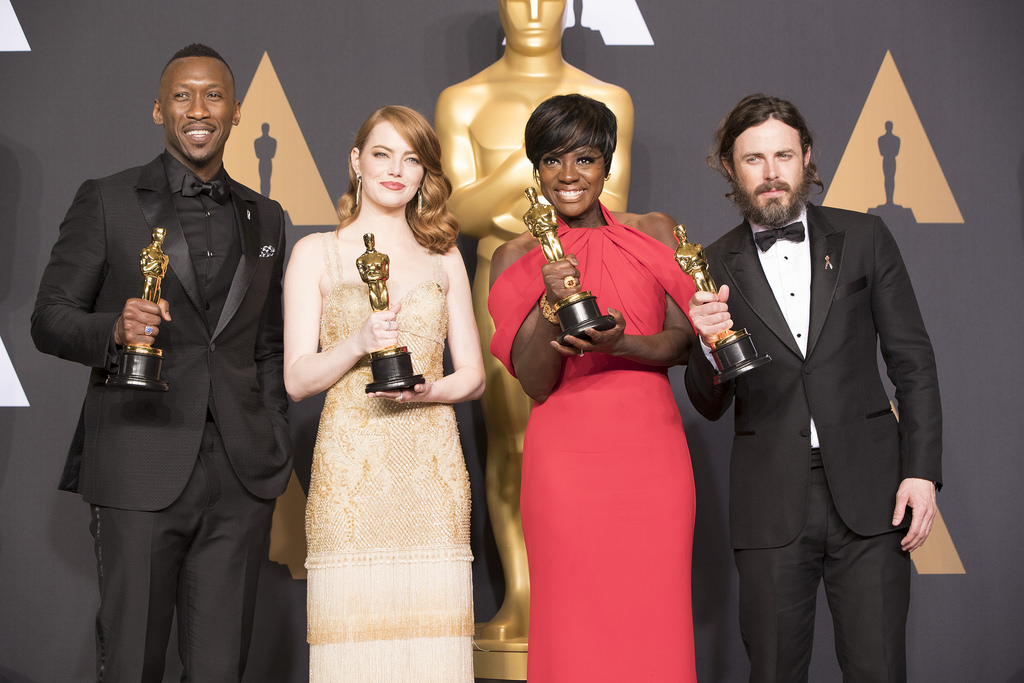
11 May The diversity gap in the Oscars
The Oscars has caused an uproar of controversy over the last decade due to there being a pattern with who gets nominated or even wins. However, it’s not only race that defines what film wins an Academy Award.
 Ever since the Oscars first commenced in 1929, it has mainly been dominated by white folk, with there only being 36 black Academy Award winners ever since. Considering the 88 years the awards ceremony has been running, it is understandable as to why social media trends such as #OscarsSoWhite has emerged and why a range of celebrities chose to boycott the 2016 ceremony. Will Smith was just one of many of the famous figures which didn’t turn up to the Oscars nor vote due to the lack of representation of different races, which has been an ongoing problem over the past few decades.
Ever since the Oscars first commenced in 1929, it has mainly been dominated by white folk, with there only being 36 black Academy Award winners ever since. Considering the 88 years the awards ceremony has been running, it is understandable as to why social media trends such as #OscarsSoWhite has emerged and why a range of celebrities chose to boycott the 2016 ceremony. Will Smith was just one of many of the famous figures which didn’t turn up to the Oscars nor vote due to the lack of representation of different races, which has been an ongoing problem over the past few decades.
The first ever black person to win an Oscar award was Hattie McDaniel in 1939, which was a full ten years since the Oscars started, and the next black winner wasn’t until 1963 for best actor. Ever since, whilst the diversity of winners has improved, it certainly isn’t as equal as people would like it to be. For example, since 2000, the non-white nominees for best actress has only been 18.7%, and for best actor 33.3%, which is nothing compared to the white figures.
However, it’s not only the individual awards that show how the Oscar’s are universally corrupt. With ‘Best Picture’ being the most acclaimed Oscar Award there is, there is 3 common denominator’s for the leading role – ethnicity, gender and age.
Since 2000, there has only been 3 films with a leading role of a non-white person, compared to the 14 films which do have a white leading role, which yet again shows the diversity gap within the Oscar’s. Nevertheless, there seems to be an even vaster gap, and it lays in gender. 88% of films in 2000 with a male leading role won the award for ‘Best Picture’, with only two films featuring a woman as the leading role. Considering this statistic, alongside ethnicity, it proves that the traditional Oscars needs to be completely rejuvenated.
Notably, the other reoccurring factor that the leading role offers is age. Whilst this aspect isn’t as major as ethnicity and gender, there is a considerable amount of films since 2000 that has the leading role between 21-40 years of age. Only 6% of films offer a leading role of someone under the age of 20, which is in great contrast to the 59% of leading roles which are ages between 21-40.
The Oscars is one of America’s biggest and renowned institutions which recognise’s excellence in cinematic achievements, but unfortunately seems to be recognising only one area. With data being shown as above and the viral backlash and boycotting on social media, perhaps whitewashed and male-based Hollywood might make a change. Until then, if you’re a filmmaker wanting to win an Oscar for Best Picture – just make sure the leading role is a white male aged between 21 and 40.

